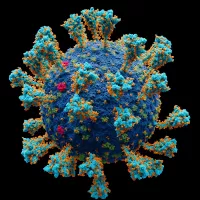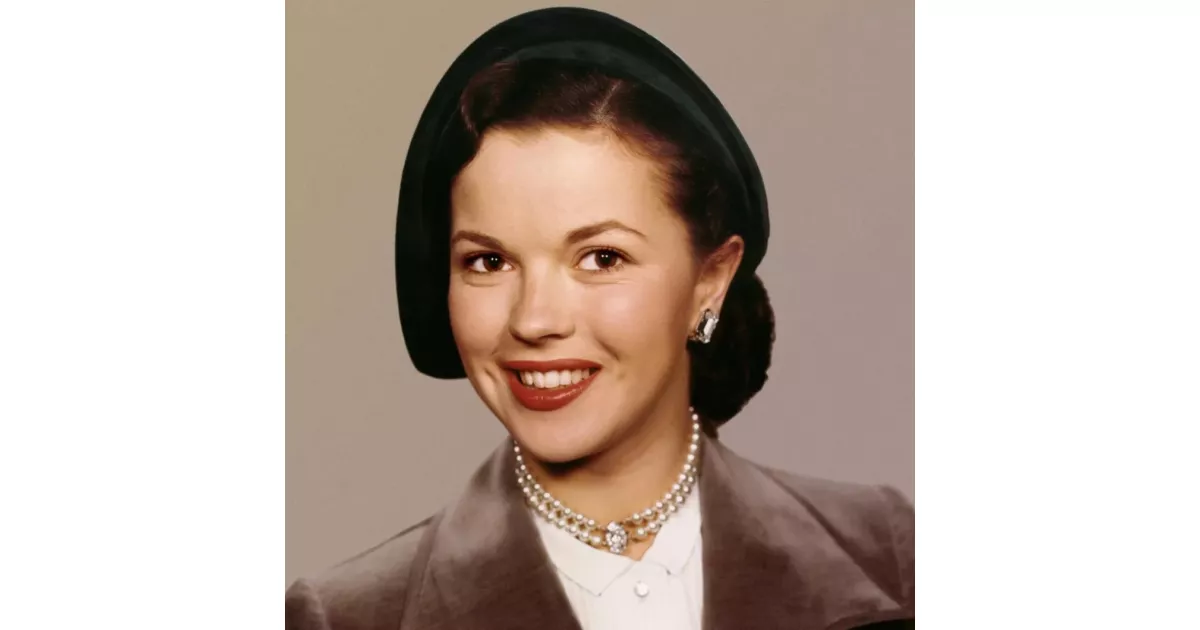Shirley Temple Black was a prominent American figure known for her multifaceted career. Rising to fame as a child actress, she captivated audiences with her performances as Hollywood's top box-office star from 1934 to 1938. Beyond her entertainment career, Temple transitioned into diplomacy, serving as the United States Ambassador to Ghana and Czechoslovakia. Further demonstrating her commitment to public service, she held the position of Chief of Protocol of the United States, leaving a lasting impact in both entertainment and international relations.
April 23, 1928: Shirley Temple's Birth
On April 23, 1928, Shirley Jane Temple, later known as Shirley Temple Black, was born. She became a famous American actress, singer, dancer, and diplomat.
1932: Contract with Educational Pictures
In 1932, Shirley Temple signed a contract with Educational Pictures after being spotted by casting director Charles Lamont.
1932: Small Role in 'The Red-Haired Alibi'
In 1932, Shirley Temple was lent to Tower Productions for a small role in the film 'The Red-Haired Alibi'.
December 7, 1933: Audition for Stand Up and Cheer!
On December 7, 1933, Shirley Temple auditioned for and won a part in the film 'Stand Up and Cheer!'
December 21, 1933: Contract Extension with Fox
On December 21, 1933, Shirley Temple's contract was extended to one year by Fox, and her mother was hired as her hairdresser and personal coach.
1933: Roles in 'Glad Rags to Riches', 'Kid 'in' Africa' and 'Runt Page'
In 1933, Shirley Temple appeared in 'Glad Rags to Riches', a parody of Mae West's 'She Done Him Wrong', as well as 'Kid 'in' Africa' and 'Runt Page'.
1933: Roles with Universal, Paramount and Warner Bros. Pictures
In 1933, Shirley Temple was lent to Universal, Paramount, and Warner Bros. Pictures for various parts, including an uncredited role in 'To the Last Man'.
May 1934: Release of Stand Up and Cheer!
In May 1934, 'Stand Up and Cheer!' was released and became Shirley Temple's breakthrough film.
July 1934: Increased Film Quota
In July 1934, Shirley Temple's contract was amended, increasing her film quota from three to four films per year.
July 18, 1934: Salary Increase and Image Control
On July 18, 1934, Shirley Temple's salary was raised to $1,000 per week, her mother's salary was raised, and steps were taken to regain control over the use of her image.
1934: Release of Bright Eyes
In 1934, 'Bright Eyes' was released, featuring Shirley Temple's signature song, 'On the Good Ship Lollipop'.
1934: Breakthrough Performance in Stand Up and Cheer!
In 1934, Shirley Temple had a breakthrough performance in the film 'Stand Up and Cheer!', leading to a contract with Fox.
February 1935: Juvenile Academy Award
In February 1935, Shirley Temple won a special Juvenile Academy Award for her outstanding contribution as a juvenile performer in motion pictures during 1934.
March 14, 1935: Footprints at Grauman's Chinese Theatre
On March 14, 1935, Shirley Temple left her footprints and handprints in the wet cement at the forecourt of Grauman's Chinese Theatre in Hollywood.
1935: Salary Increase
By the end of 1935, Shirley Temple's salary was $2,500 per week.
1935: Appearance in 'The Little Colonel'
In 1935, Shirley Temple appeared in 'The Little Colonel' with Bill "Bojangles" Robinson, performing the famous staircase dance.
1935: Awarded Miniature Juvenile Oscar
In 1935, Shirley Temple was awarded a miniature Juvenile Oscar.
1937: Release of 'Heidi'
In 1937, 'Heidi' was the only Temple film released. A dream sequence was added midway through shooting.
1937: References in film Stand-In
In 1937, Shirley Temple was referenced in the film Stand-In.
May 1938: Advertisement in The Hollywood Reporter
In May 1938, Shirley Temple was included in an advertisement in 'The Hollywood Reporter' as one of the actors who deserved their salaries.
September 1939: Enrollment in Westlake School for Girls
In September 1939, Shirley Temple enrolled in the Westlake School for Girls as a seventh grader.
1939: Grand Marshal of the Rose Parade
In 1939, Shirley Temple was the Grand Marshal of the New Year's Day Rose Parade in Pasadena, California.
1939: Dalí Painting and Donald Duck Animation
In 1939, Shirley Temple was the subject of Salvador Dalí's painting 'Shirley Temple, The Youngest, Most Sacred Monster of the Cinema in Her Time' and appeared animated with Donald Duck in 'The Autograph Hound'.
1940: Fitzgerald's Babylon Revisited Film Project
In 1940, Lester Cowan bought the rights to F. Scott Fitzgerald's 'Babylon Revisited' and wanted Shirley Temple to star, but the project was shelved.
1941: Release of 'Kathleen'
In 1941, Shirley Temple's film 'Kathleen' was released by MGM, but it was relatively unsuccessful.
March 4, 1942: Debut of Junior Miss Radio Series
On March 4, 1942, Shirley Temple's radio series 'Junior Miss' debuted on CBS, with her playing the title role.
August 26, 1942: End of Junior Miss Radio Series
On August 26, 1942, Shirley Temple's radio series 'Junior Miss' ended its run on CBS.
1942: Release of 'Miss Annie Rooney'
In 1942, Shirley Temple's film 'Miss Annie Rooney' was released for United Artists but was unsuccessful.
1943: Met John Agar
In 1943, 15-year-old Shirley Temple met 22-year-old John Agar.
May 1945: Graduation from Westlake School for Girls
In May 1945, Shirley Temple graduated from the Westlake School for Girls.
1945: Marriage to John Agar
In 1945, at age 17, Shirley Temple married John Agar.
1947: Appearance in 'That Hagen Girl'
In 1947, Shirley Temple appeared in the film 'That Hagen Girl' with future U.S. President Ronald Reagan.
1948: Birth of Linda Susan Agar
In 1948, Shirley Temple gave birth to her daughter, Linda Susan Agar.
1950: Divorce from John Agar
In 1950, Shirley Temple divorced John Agar on the grounds of mental cruelty.
1950: Retirement from Full-Length Films
In 1950, Shirley Temple formally announced her retirement from full-length films.
1950: Met Charles Alden Black
In 1950, Shirley Temple met Charles Alden Black at a cocktail party in Hawaii.
1958: Shirley Temple's Storybook series
In 1958, Shirley Temple hosted, narrated, and occasionally acted in an anthology series of fairy tale adaptations called Shirley Temple's Storybook, aired as a series of specials on ABC.
February 8, 1960: Star on the Hollywood Walk of Fame
On February 8, 1960, Shirley Temple received a star on the Hollywood Walk of Fame.
September 10, 1961: End of 'The Shirley Temple Show'
On September 10, 1961, 'The Shirley Temple Show' ended its broadcast on NBC.
1967: Unsuccessful Congressional Run
In 1967, Shirley Temple ran unsuccessfully in a special election in California's 11th congressional district as a conservative Republican, coming in second behind Pete McCloskey.
1967: Failed Run for Congress
In 1967, after Shirley Temple's failed run for Congress, Henry Kissinger overheard her talking about South West Africa. He was surprised that she knew anything about it.
August 1968: Witness to Soviet Invasion of Czechoslovakia
In August 1968, Shirley Temple, as a representative of the International Federation of Multiple Sclerosis Societies, was in Prague and witnessed the Soviet-backed forces invade Czechoslovakia.
December 1969: Delegate to the United Nations General Assembly
In December 1969, Shirley Temple was appointed by President Richard Nixon as a delegate to the 24th United Nations General Assembly.
1969: Diplomatic Career at the United Nations
In 1969, Shirley Temple began her diplomatic career, representing the U.S. at a session of the United Nations General Assembly under Ambassador Charles Yost.
1970: Golden Plate Award
In 1970, Shirley Temple received the Golden Plate Award of the American Academy of Achievement.
1972: Diagnosis of Breast Cancer
In 1972, at age 44, Shirley Temple was diagnosed with breast cancer, and her public disclosure of the diagnosis was a significant milestone in improving breast cancer awareness.
December 6, 1974: United States Ambassador to Ghana
On December 6, 1974, Shirley Temple was appointed by President Gerald R. Ford as the United States Ambassador to Ghana.
1975: Honorary Chieftaincy in Ghana
In 1975, Shirley Temple was installed as an honorary deputy paramount chief of the Oguaa people of Ghana.
July 1, 1976: Chief of Protocol of the United States
On July 1, 1976, Shirley Temple was appointed as the first female Chief of Protocol of the United States.
July 13, 1976: End of Ambassadorship to Ghana
On July 13, 1976, Shirley Temple's tenure as the United States Ambassador to Ghana concluded.
1976: Considered as Potential Running Mate for Gerald Ford
In 1976, Shirley Temple was considered as a potential running mate for Gerald Ford in the presidential election, but Bob Dole was chosen instead.
January 21, 1977: End of term as Chief of Protocol
On January 21, 1977, Shirley Temple's term as the Chief of Protocol of the United States ended.
February 1980: Honored by Freedoms Foundation
In February 1980, Shirley Temple was honored by the Freedoms Foundation of Valley Forge, Pennsylvania.
1980: Hopes for Appointment After Reagan's Victory
In 1980, after Ronald Reagan's victory in the presidential election, Shirley Temple had hoped for a cabinet position or ambassadorship, but she was not given any new posting during the Reagan administration.
1984: President of the Commonwealth Club of California
In 1984, Shirley Temple served as president of the Commonwealth Club of California, a public-affairs forum.
1988: Lawsuit over Bottled Soda
In 1988, Shirley Temple brought a lawsuit to prevent a bottled soda version from using her name.
August 23, 1989: United States Ambassador to Czechoslovakia
On August 23, 1989, Shirley Temple was appointed by President George H. W. Bush as the United States Ambassador to Czechoslovakia, becoming the first and only woman in this role.
1989: U.S. Ambassador to Czechoslovakia
In 1989, Shirley Temple served as the U.S. Ambassador to Czechoslovakia.
1989: Grand Marshal of the Rose Parade
In 1989, Shirley Temple was the Grand Marshal of the New Year's Day Rose Parade in Pasadena, California.
July 12, 1992: End of Ambassadorship to Czechoslovakia
On July 12, 1992, Shirley Temple's tenure as the United States Ambassador to Czechoslovakia concluded.
1992: End of Ambassadorship to Czechoslovakia
In 1992, Shirley Temple's service as the U.S. Ambassador to Czechoslovakia concluded.
1998: Kennedy Center Honor
In 1998, Shirley Temple received the Kennedy Center Honor for her achievement in film.
1999: Host of AFI's 100 Years...100 Stars Awards Show
In 1999, Shirley Temple hosted the AFI's 100 Years...100 Stars awards show on CBS.
1999: Grand Marshal of the Rose Parade
In 1999, Shirley Temple was the Grand Marshal of the New Year's Day Rose Parade in Pasadena, California.
2001: Consultant on 'Child Star: The Shirley Temple Story'
In 2001, Shirley Temple served as a consultant on an ABC-TV film production of her autobiography, 'Child Star: The Shirley Temple Story'.
August 4, 2005: Death of Charles Alden Black
On August 4, 2005, Charles Alden Black, Shirley Temple's husband, passed away.
February 10, 2014: Shirley Temple Black's Death
On February 10, 2014, Shirley Temple Black, the American actress, singer, dancer, and diplomat, passed away.
March 3, 2014: Death Certificate Released
On March 3, 2014, Shirley Temple's death certificate was released, revealing that the cause of death was chronic obstructive pulmonary disease (COPD).
June 9, 2021: Featured on Google Doodle
On June 9, 2021, Shirley Temple was featured on that day's Google Doodle in celebration of the opening anniversary of "Love, Shirley Temple” a special exhibit featuring a collection of her rare memorabilia at Santa Monica History Museum.
Mentioned in this timeline

Google LLC is a multinational technology company specializing in online...
CBS Broadcasting Inc CBS is a prominent American commercial broadcast...
California is a U S state on the Pacific Coast...
The National Broadcasting Company NBC is a major American commercial...
Africa is the second-largest and second-most populous continent comprising of...
Pennsylvania is a U S state located in the Mid-Atlantic...
Trending
30 days ago Rashee Rice Limited in Practice; Mahomes Full Participant Before Chiefs-Cowboys Game

21 days ago Tim Allen Returns to Stand-Up: Fresno Performance at Warnors Theatre Announced

7 months ago Bryan Mbeumo transfer battle: Manchester United, Arsenal, and Newcastle vie for signature.

8 months ago Maury Povich reflects on media; Connie Chung honored and encouraged to write memoir.

COVID- testing is essential for identifying SARS-CoV- infections and tracking the pandemic Two primary types exist molecular tests detect the...

24 days ago Joseph Quinn's 'Stranger Things' impact, 'Master of Puppets' fame, and 'Pillion' BIFA win.
Popular

Tucker Carlson is an American conservative political commentator known for...

XXXTentacion born Jahseh Dwayne Ricardo Onfroy was a controversial yet...

Ben Shapiro is a prominent American conservative political commentator media...

Candace Owens is an American conservative political commentator and author...

William Franklin Graham III commonly known as Franklin Graham is...

Ursula Gertrud von der Leyen is a prominent German politician...

